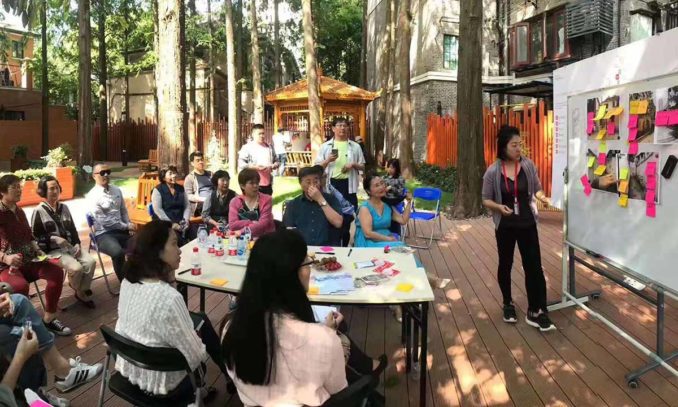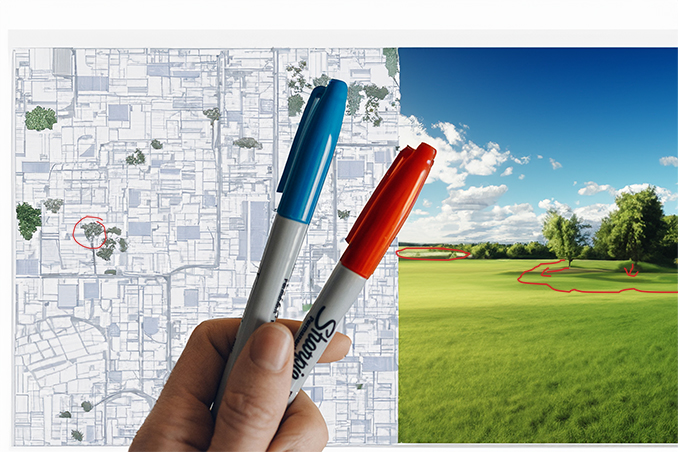Design reviews are an effective way to enhance the quality of design and develop the best possible solution for a given problem. Different types of reviews can be conducted throughout the design process, including those carried out by design firms, clients, consultants, independent experts, or the community. Each of these approaches can offer valuable insights to improve the design quality. The following is an overview of different types of design reviews and the strategies involved.
Review Types
Group Feedback
A group feedback session with your internal design team can be informal or formal. The benefit of an informal group feedback session is that it can be an open forum to challenge the design, test ideas, and develop new ideas. A formal session can be more restrictive in voicing opinions but sometimes more effective if facilitated (managed) by someone who can ask the right questions.
Introducing other consultants, especially on large projects, can also assist in a greater understanding of the problem and the design solution and quickly coming together to address design issues. Of course, your team must be comfortable with openly discussing the design with other consultants and will have to prepare before the session.
Client Review
Client reviews can be in person via a presentation, or the client can review the documents and provide written feedback. These review types can be stressful as you present to the client, who ultimately decides if they like your design and whether they will proceed with your ideas.
Community Feedback
Community feedback is required for public projects and can involve various community groups, such as residents, user groups (sports, cultural), and other stakeholders. The community feedback can be provided through conversation, written form, or an online forum. It can also be a formal presentation (town hall) meeting or a meet-and-greet on the site. These can be very rewarding as a landscape architect when presenting the design to the end users and hearing their excitement and feedback on the project.

Design Lead Review
Design Lead Reviews are the most common design reviews undertaken in design firms. The design (or technical) leader often undertakes a verbal review of the design team’s presentation or a markup (a.k.a. redlining) of the design documents. This review is often to check the design but also to go through and remove mistakes (spelling, north arrows, etc.) or request the inclusion of more information (diagrams, sketches, labeling, scale bars, etc.). This process will occur often during the life of a project.

Independent (Peer) Review
Undertaken by internal or external experts independent of the design process. An internal review is an excellent strategy for someone not involved with the project to read the supporting documents (brief, support materials) and then review the design. These reviews often end up with a long list of questions for the team to answer. These may have to do with the overall concept or narrative or relate to the technical aspects of the design, coordination, or construction details.
An independent review can be commissioned by a client or the government and completed by one person or a panel. These reviews are usually formal presentations by the design team. These reviews can be stressful and challenging for the design team, and the design managers should ensure that they understand the process and the review requirements (format, length, documents, etc).
Design Risk Review
Everything has some level of inherited risk, whether low or high. However, design risk reviews are a good way to test whether the design is safe, feasible (technically and financially), and compliant with regulations. The outcomes from the risk review do not mean that the design objectives will be compromised; it all depends on the level of risk that the design firm and client are willing to take on.
Value Management Review
Designers often loathe this type of review as it can mean that the design requires a redesign or that various elements or materials are removed or replaced to meet the project budget. It is best to prepare for these reviews and determine what you value the most in the project and what you may be willing to negotiate or forego to achieve the design objectives.
Criteria (Benchmarking) Based Review
A type of design review that uses criteria such as SITES or BREAM or a tool such as Pathfinder or Climate Conscious to asses the whole or just elements of the design. Alternatively, it can be a design review that compares (benchmarks) between the proposed design and previously completed projects acknowledged by many as the benchmark for the typology, such as commercial use, public realm, or similar.
Post Completion (Occupancy) Review
A review or assessment of a design after completion is critical to understanding the design process and its success. It allows a review of the start (what was the design objective at the beginning?) and what happened during the process? Were the physical outcomes of the design what we expected? Were the client, community, and stakeholders happy with the outcome? What would we do differently? What should we record now? When should we do the next review? Post-completion reviews often end up with more unanswered questions than answers, but they provide insight into the design and what worked and what failed.
Strategies for Design Reviews
Prepare
You must prepare for a design review and understand the design objectives, status, issues (resolved and unresolved), program, and financials (fees and budget). When you prepare for the review, it helps save time for the designer and those attending. Remember to go through the key points and the presentation and understand the time available, as you don’t wish to rush to finish on time at the end. For written reviews, it is best to provide some briefing and key points for the reviewer to ensure they understand the design objectives, status, and possible changes (design, budget, etc.).
Know your audience
When preparing for a design review, you need to understand your audience. Are they residents, experienced clients, or other consultants? Knowing your audience allows you to tailor the communication technique and materials.
The key is to prepare the presentation to clearly show the design process, how you met the design objectives, and how you solved any problems you identified during the process. You have to ensure that the presentation is at a level that the client understands and includes only the key information.
Timing
The timing of design reviews is vital in the design process. Your materials and presentation should match the program and status. Often, attending the first meeting with a fully resolved polished design can be disastrous, as it stops clients and residents having input into the project; alternatively, turning up to a technical review with only a plan and few details can undermine the client’s confidence in the design firm’s abilities.
Intervals
Design reviews should occur regularly in the design process to ensure that the design meets the objectives, budget, program, etc. Regular reviews can allow the designers and consultants to discuss issues, work through problems, and create a collaborative design that benefits everyone involved.
Gather Feedback and Create Actions
When the design reviews are over, you need to gather feedback in the form of notes, emails, photos, markups, and sketches to get the most out of them. Then, take the time to curate the feedback, group it into key points, and create actions.
Thank the participants and keep them informed.
Always remember to thank the participants at the end of the design review and also send follow-up emails or make phone calls to let them know you value their input and are moving forward with the design.
Stifling or Empowering
To some designers, design reviews can hinder the design process, stifle the design, create unnecessary work (preparation and participation), and waste time. However, others find the design review process empowering and can provide rigor (resolution) to the design process, allowing others to offer ideas, test, and develop the design beyond a simple thought or object. It provides the designer time to reflect and listen to other ideas but also a realisation of whether the design is cohesive and meets the design objectives.
Sticking to the design objective
Design reviews can be valuable. However, they must be rigorous and question whether the design meets the primary design objective. Design reviews (especially from committees or communities) often create a piecemeal design that ends up as a wishlist. There is a need to incorporate stakeholder feedback, but it must be curated to meet the intended design outcome.
All designers must be mindful of the design objective during the reviews, especially when resolving multiple design issues with consultants, clients, or the community. However, designers can lose sight of the objective(s) as they become too engrossed in defending a design element or design language review rather than evaluating the feedback, determining how to respond, and then reflecting on how it may or may not influence the design.
Design reviews are crucial to improving, refining, and developing the design that meets the objectives of the client, the community, and you as the designer.
[1] Mix media images including two pens image by Kelly Sikkema (Unsplash) and other artificial intelligence images.
Article written by Damian Holmes, Founder and Editor of World Landscape Architecture.
DISCLAIMER: This article is for educational purposes only. The content is intended only to provide a summary and general overview of matters of interest. It’s not intended to be comprehensive nor to constitute advice. You should always obtain professional advice appropriate to your circumstances, before acting or relying on any of that content. This advice is general in nature.
